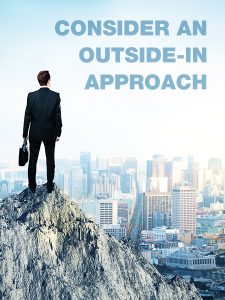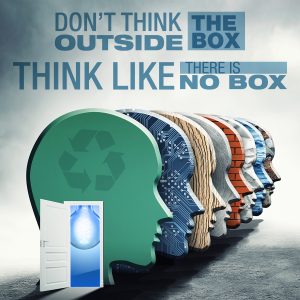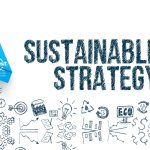Success in Sustainability: The Most Important Business Trait For Your Market
– April 20, 2022 –
Why press the easy button? Challenge the status quo!
Today, a call to “challenge the status quo” seems played out – and honestly, what does it even look like? In a highly competitive market and the sustainably minded world, does challenging the status quo mean you need to be a rebellious company leader, constantly pointing out flaws in your organization, or be a manager who zigs when everyone else zags? Maybe. But what if challenging the status quo was more positive than negative and more exciting than daunting, all while being achievable?
To begin, let’s review three key perspectives you can have as a leader if you make challenging the status quo a staple in your business.
An Outside-In Look
Most executives spend their time looking at the world from where they sit—an inside-out look. While this vantage point is certainly valuable, it’s equally as important to look at things from the outside-in to achieve sustained growth in the marketplace. This means starting at the ending and working backward to understand the difference between what you make and what your customers need.
the ending and working backward to understand the difference between what you make and what your customers need.
Typically, an outside-in perspective can lead to substantial questions, such as:
- Where are the growth markets available for my business?
- How can I tap into available opportunities?
- What are the modern trends, and how can I meet them?
- Why does my company only recycle [X] when we could also recycle [Y] and [Z]?
Perhaps there are good reasons you’re unaware of, or maybe it’s because “that’s the way it’s always been done.” The answers may lead to further questions, problems, or solutions that you maybe haven’t considered. That’s why staying inside your own internal box is not a formula for success.
An Openness to Innovation
 According to Harvard Business Review, about 72% of leaders say they “never” or “rarely” challenge the status quo or their employees to think outside the box. However, true growth requires change. It takes innovative thinking and keen insight to keep up with current market trends, foresee where it’s going and have tabs on what’s coming in and going out for businesses.
According to Harvard Business Review, about 72% of leaders say they “never” or “rarely” challenge the status quo or their employees to think outside the box. However, true growth requires change. It takes innovative thinking and keen insight to keep up with current market trends, foresee where it’s going and have tabs on what’s coming in and going out for businesses.
Why do I need to change? A new analysis by the International Energy Agency showed that the world economy rebounded strongly from the pandemic. As a result, global energy-related carbon dioxide emissions rose to 40 billion tons in 2021 – their highest level in history. Additionally, the Environmental Protection Agency estimates that 75% of our national waste stream is recyclable, but we only recycle about 30% of it. Business leaders need to act now to meet the demands of science, government, investors, and society at large – and the pressure to act will continue to grow exponentially.
Does it need to be a big change? No. That’s a common misconception when it comes to challenging the status quo. Sustainable solutions call for new ways of thinking about existing systems. Everything doesn’t need to burn down to start fresh. Sometimes, it’s the small, incremental steps that can put your business on an efficient path.
How do I sustain growth? You need a culture that embraces innovation across all levels. It requires a structural mechanism to enable ideas to flow to decision makers from anywhere within the organization. And if you make a change, and it pays off, you’re not all set. To remain relevant, you must consistently welcome unconventional thinking. These elements are more crucial today than ever as businesses redefine how they respond to constantly evolving requirements and consumer needs.
Knowing the True Risk: Doing Nothing
 Our Achilles heel is that we see something new as inherently risky while something familiar as safe. But waiting to implement ideas such as continuous data analysis and recycling solutions could come at a much greater cost, putting your business at a disadvantage that may ultimately leave you reeling.
Our Achilles heel is that we see something new as inherently risky while something familiar as safe. But waiting to implement ideas such as continuous data analysis and recycling solutions could come at a much greater cost, putting your business at a disadvantage that may ultimately leave you reeling.
What are the benefits of doing something?
- Maintain economic neutrality
- Add brand value and attract new customers
- Better focus on your operations (rather than stretching your responsibilities)
- Boost workforce morale and attract valuable talent
- Societal impact and sustainability success stories
Change is inevitable for any company striving to create a competitive advantage, and staying stagnant is far riskier than implementing new techniques or technologies to improve old processes. For this reason, getting comfortable with being uncomfortable can drive your organization’s operations toward a more efficient and controlled environment with a strong sustainability position.









